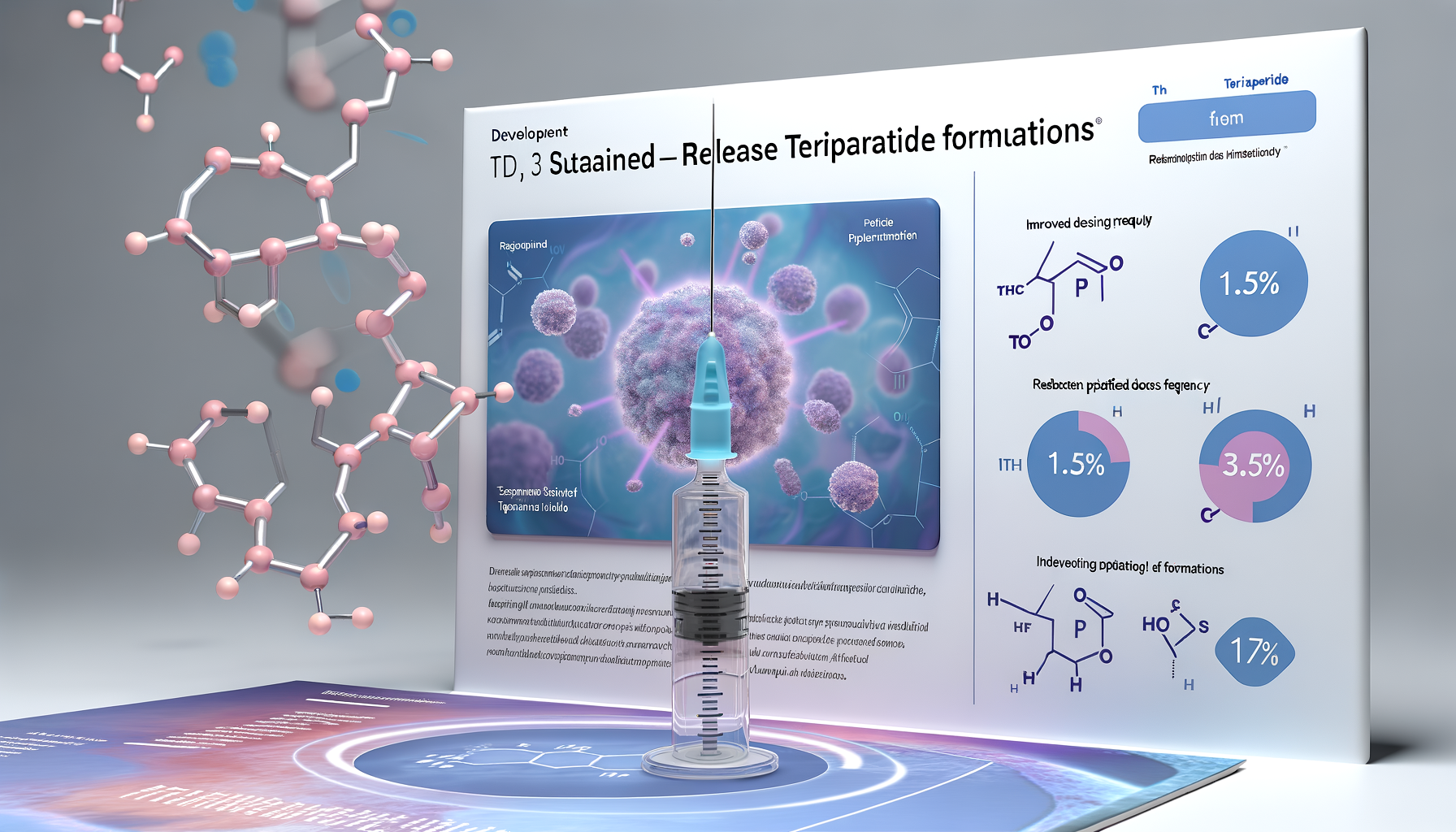Development of Sustained-Release Teriparatide Formulations Improving Dosing Frequency and Patient Outcomes
 Pammi Soni | 360iResearch™
Pammi Soni | 360iResearch™
The landscape of osteoporosis treatment has been significantly transformed with the introduction of recombinant teriparatide, a synthetic form of parathyroid hormone, which plays a pivotal role in bone regeneration and increasing bone density. However, one of the main challenges with teriparatide therapy is the burden associated with its dosing frequency, often requiring daily injections, which can impact patient adherence and overall outcomes. In recent years, substantial strides have been made in the development of sustained-release teriparatide formulations, designed to maintain therapeutic efficacy while improving dosing convenience and patient compliance.
Understanding Teriparatide and Its Therapeutic Role
Teriparatide is an anabolic agent used in the treatment of osteoporosis, especially in patients at high risk of fractures. Unlike antiresorptive agents, teriparatide stimulates new bone formation by activating osteoblasts. Typically, the drug is administered via subcutaneous injection once daily, a regimen that has demonstrated significant improvements in bone mineral density and reduced fracture risk.
Despite its effectiveness, daily injections pose several challenges including injection site discomfort, the psychological burden of frequent injections, and the logistical difficulties in maintaining consistent dosing schedules. These factors contribute to poor adherence and discontinuation, which can diminish the therapeutic benefits.
The Innovation of Sustained-Release Formulations
Responding to these challenges, researchers and pharmaceutical developers have focused on creating sustained-release teriparatide formulations. These innovative drug delivery systems are engineered to release teriparatide gradually over extended periods, thereby reducing the dosing frequency from daily injections to potentially weekly or even monthly administrations.
Such formulations leverage advanced technologies including biodegradable polymer matrices, microsphere encapsulation, and nanoparticle carriers. These technologies provide controlled drug release, ensuring stable plasma concentrations of teriparatide over time, minimizing peak-trough fluctuations, and potentially reducing side effects.
Advantages of Sustained-Release Teriparatide Formulations
Improved Patient Compliance and Convenience: Reduced injection frequency means patients are less burdened by treatment, enhancing adherence and persistence with therapy.
Consistent Therapeutic Levels: Sustained-release systems maintain steady drug levels, which could optimize bone remodeling processes and reduce the risks associated with peak concentrations.
Enhanced Safety Profile: By avoiding high peak doses, sustained-release formulations may reduce adverse effects such as hypercalcemia and injection site reactions.
Better Clinical Outcomes: Improved adherence and more consistent drug delivery can translate into better bone density improvements and fracture risk reduction.
Current Research and Clinical Trials
Several sustained-release teriparatide formulations are under clinical investigation, with early-phase trials demonstrating promising pharmacokinetic profiles and patient acceptability. These studies focus on optimizing the balance between drug release rate, bioavailability, and minimal side effects. The use of biodegradable polymers like PLGA (poly(lactic-co-glycolic acid)) microspheres has been particularly notable, providing a controlled release over weeks with a single injection.
Challenges and Future Directions
Despite the promising developments, creating an ideal sustained-release teriparatide formulation comes with challenges. Ensuring consistent and reproducible drug release in diverse patient populations, minimizing immune responses to the delivery vehicle, and scaling up manufacturing remain significant hurdles. Moreover, long-term safety and efficacy data are necessary to fully understand the benefits and limitations relative to daily injections.
Looking forward, the integration of personalized medicine and digital health tools could further enhance management strategies. For instance, drug delivery systems might be tailored based on patient-specific factors such as metabolism and bone turnover rates, and adherence could be monitored with connected devices.
Conclusion
The development of sustained-release teriparatide formulations represents a significant advancement in osteoporosis management. By improving dosing convenience and patient adherence, these new formulations hold the potential to enhance therapeutic outcomes, reduce fracture incidence, and ultimately improve the quality of life for individuals affected by osteoporosis. As research continues to evolve, the future of teriparatide therapy looks promising, offering a more patient-centric approach to bone health management.
Healthcare professionals, researchers, and pharmaceutical developers must continue to collaborate to overcome existing challenges and bring these innovative solutions from the laboratory to the clinic. Staying informed about these advancements is crucial for all stakeholders involved in osteoporosis care.
Explore Comprehensive Market Analysis of Recombinant Teriparatide for Injection Market
Source: @360iResearch
Subscribe to my newsletter
Read articles from Pammi Soni | 360iResearch™ directly inside your inbox. Subscribe to the newsletter, and don't miss out.
Written by
